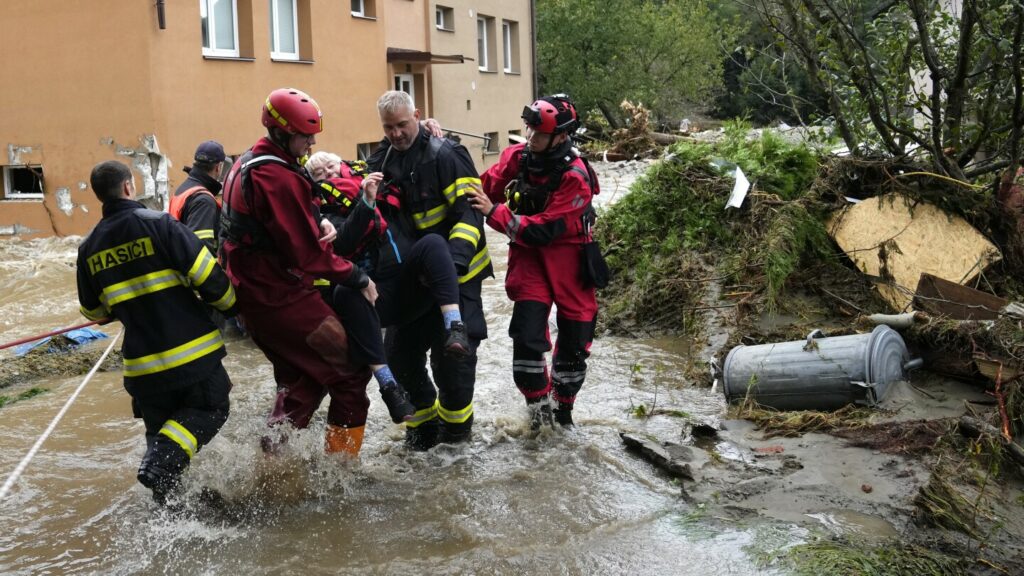FILE – Women save a cat from floods in Szentendre, near Budapest, Hungary, Sept. 19, 2024. (AP Photo/Denes Erdos)
Some of the most severe impacts were felt in the Polish-Czech border region and Austria, mainly in urban areas along major rivers. The study noted that the death toll from this month’s flooding was considerably lower than during catastrophic floods in the region in 1997 and 2002. Still, infrastructure and emergency management systems were overwhelmed in many cases and will require billions of euros to fix.
Last week, European Union chief Ursula von der Leyen pledged billions of euros in aid for countries that suffered damage to infrastructure and housing from the floods.
The World Weather Attribution study also warned that in a world with even more warming — specifically 2 degrees Celsius (3.6 degrees Fahrenheit) of warming since preindustrial times, the likelihood of ferocious four-day storms would grow by 50% compared to current levels. Such storms would grow in intensity, too, the authors found.
FILE – A resident waits to be evacuated from his flooded house in Jesenik, Czech Republic, Sept. 15, 2024. (AP Photo/Petr David Josek, File)
The heavy rainfall across Central Europe was caused by what’s known as a “Vb depression” that forms when cold polar air flows from the north over the Alps and meets warm air from Southern Europe. The study’s authors found no observable change in the number of similar Vb depressions since the 1950s.
The World Weather Attribution group launched in 2015 largely due to frustration that it took so long to determine whether climate change was behind an extreme weather event. Studies like theirs, within attribution science, use real-world weather observations and computer modeling to determine the likelihood of a particular happening before and after climate change, and whether global warming affected its intensity.
FILE – Spectators look at the partially collapsed Carolabrucke bridge, over the Elbe, which is rising rapidly due floodwaters, in front of the state chancellery in Dresden, Germany, Sept. 15, 2024. (AP Photo/Markus Schreiber)
___
This story has corrected the range of increased intensity of rains due to climate change to 7% to 10%, rather than 7% to 20%, based on a data correction issued by World Weather Attribution.
___
Read more of AP’s climate coverage at http://www.apnews.com/climate-and-environment
___
The Associated Press’ climate and environmental coverage receives financial support from multiple private foundations. AP is solely responsible for all content. Find AP’s standards for working with philanthropies, a list of supporters and funded coverage areas at AP.org.
Source link : http://www.bing.com/news/apiclick.aspx?ref=FexRss&aid=&tid=66f65648de9f46e589f9f4994be0e977&url=https%3A%2F%2Fapnews.com%2Farticle%2Fcentral-europe-european-union-floods-climate-change-damage-rain-5e90744008e4bc1404bbfd181f09b32f&c=6979169556095326525&mkt=de-de
Author :
Publish date : 2024-09-26 10:37:00
Copyright for syndicated content belongs to the linked Source.
